
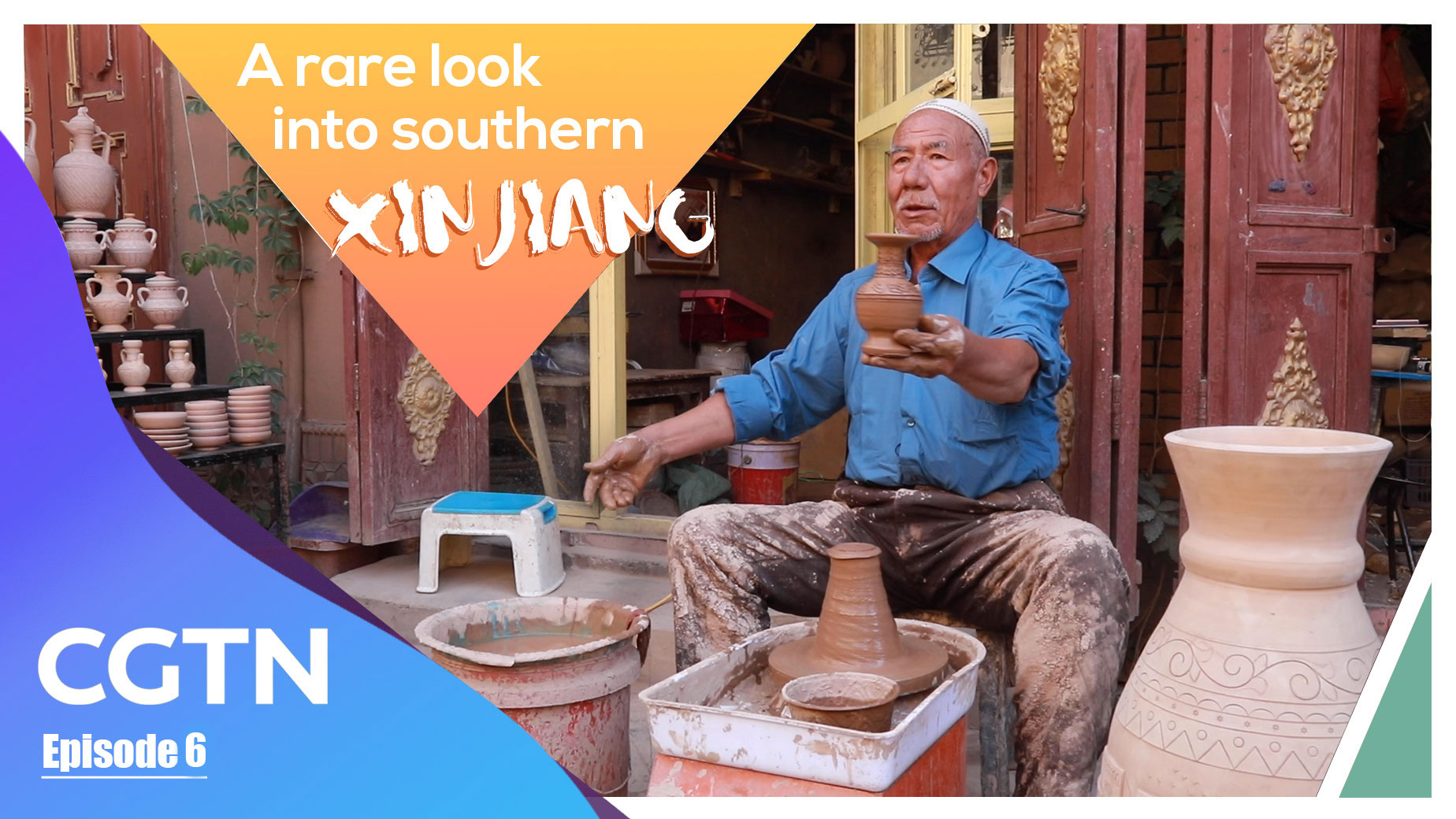
Far into the westernmost land of China perches an intriguing mixture of heritage and modernity, passion and wilderness. That's where the city of Kashgar – the vibrant remnant of the ancient Silk Road – sits.
In the center of the tranquil oasis, which borders the Taklamakan to the east and the Pamir to the west, is the renowned Old City – an ancient town built on rammed earth houses and interlaced narrow alleyways. Home to a huge population of 130,000, comprising mostly Uygurs, the Old City, spanning 4.25 square kilometers, seems to have been preserved from modern desire. In the maze where hundreds of footpaths wind to residential houses, we felt we had traveled back in a time machine.
The Kashgar Old City is one of the few places that have remained immune from the passage of time, with cultural heritages surviving the rise and fall of a history encompassing more than 2,000 years. Arrays of workshops for wooden vessels, pottery ware, copperware and embroideries are lined along the market streets.
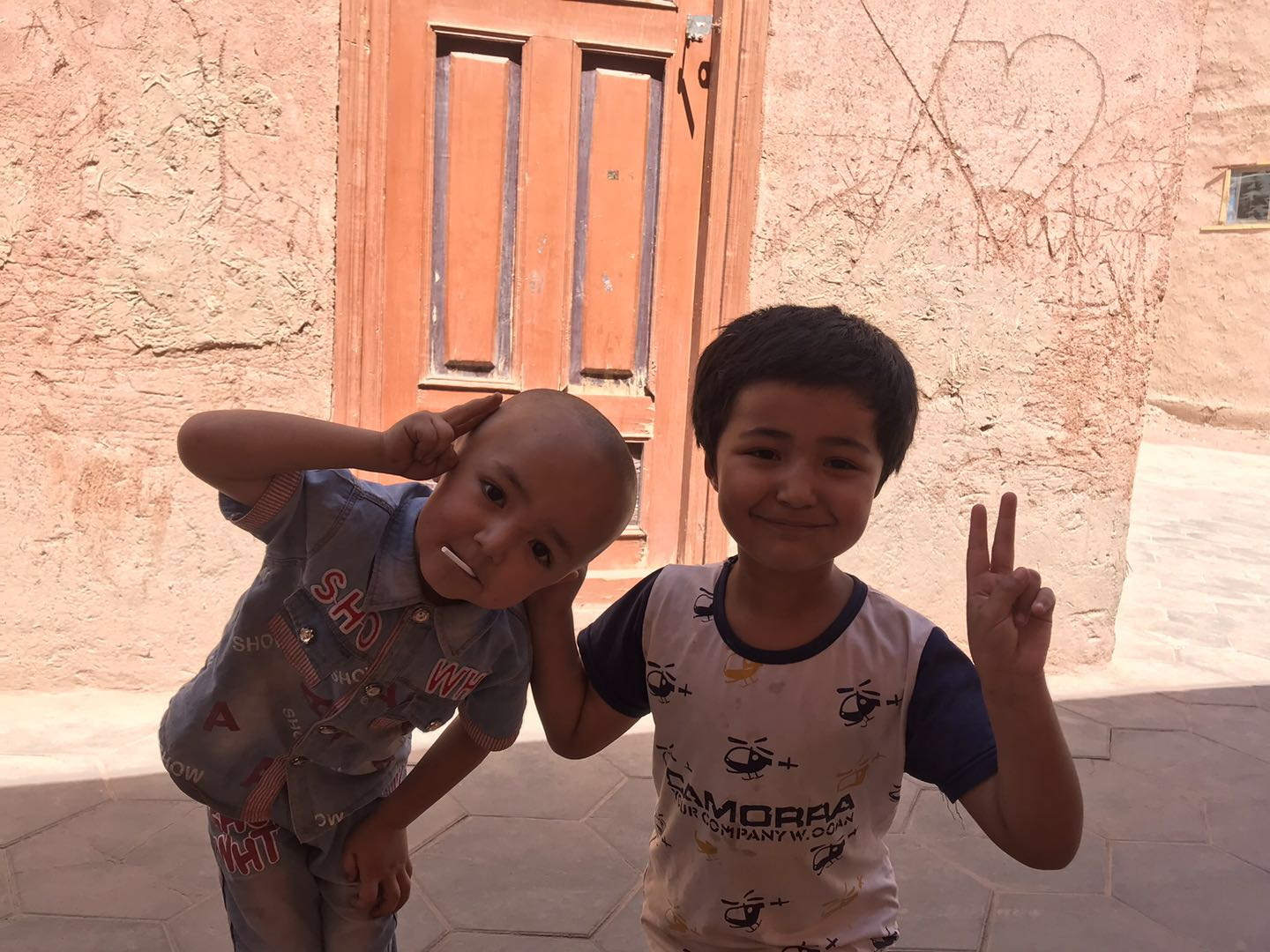
Two Uygur kids living in Kashgar Old City pose for a photo in Kashgar, Xinjiang Uygur Autonomous Region, June 15, 2019. /CGTN Photo
Within the humble façade of a small pottery shop, shapes and patterns are emerging from what was only a pile of mud just a couple of minutes ago. Its owner Tursun Rustam, a seventh-generation earthenware potter, is engaged in an art that has persisted for centuries.
Earthenware is a kind of pottery fired below 1,200 degrees Celsius. It can be either glazed or unglazed, and coarser and also rougher than porcelain and stoneware. The mud is very important to how a work takes shape. For 68-year-old Tursun, he's been fetching the mud from the nearby Tuman riverside for the past 53 years. "The mud there is highly cohesive and slithery," Tursun told us while working on his wheel.
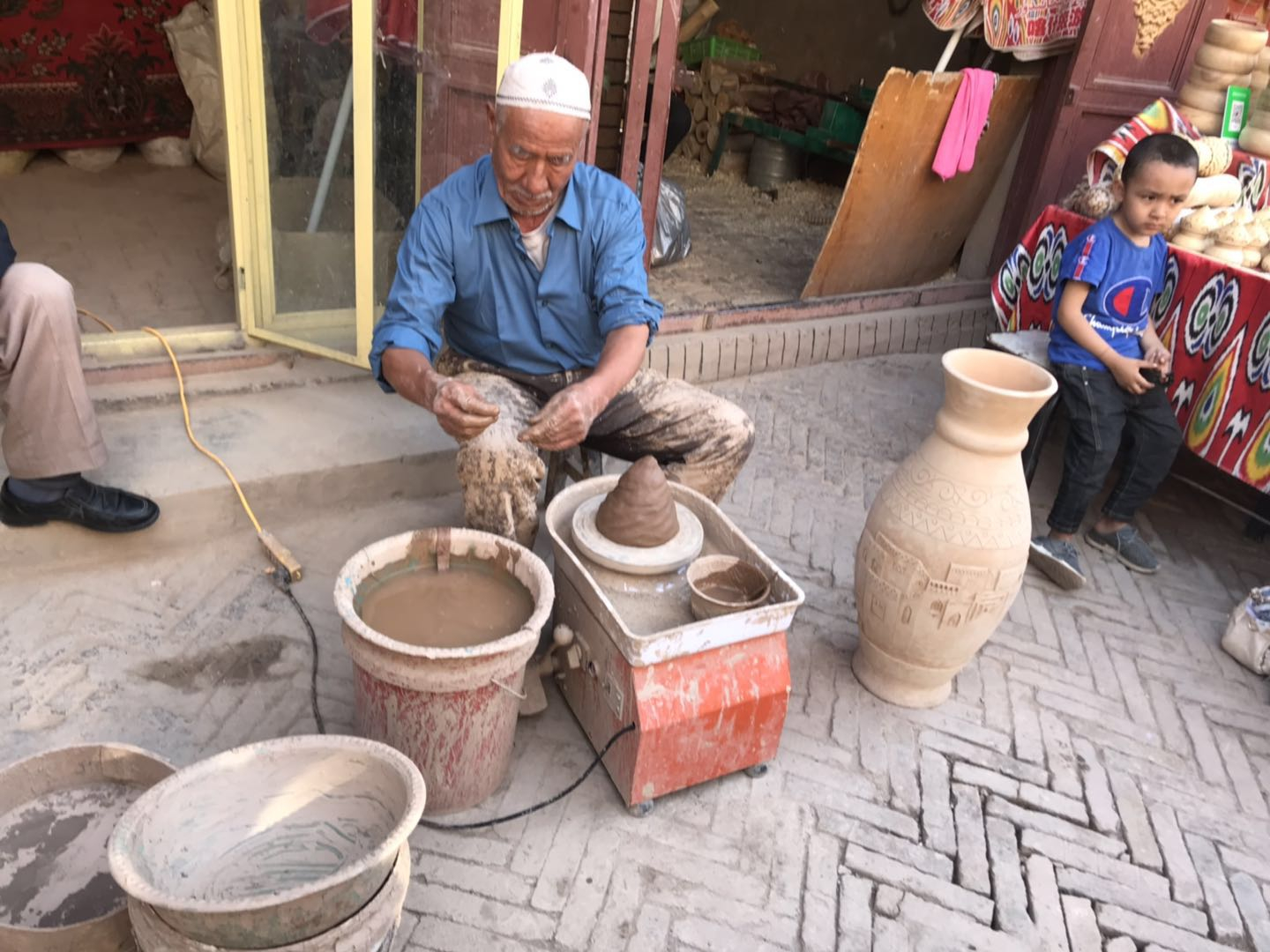
Tursun Rustam is making a clay product in Kashgar Old City, Xinjiang Uygur Autonomous Region, June 15, 2019. /CGTN Photo
He then showed us a skill unique to his family: making clay products with his eyes closed. In less than an hour, a bowl, a kettle, and a whistle stood before us. Then they would be carried to a high-temperature kiln in the Gaotai ancient homes, where Tursun's family has been living since the first generation. We were unable to visit as the houses are currently being renovated.
Tursun's reputation has solidified since Kashgar earthenware was recognized as a national intangible cultural heritage. Now his son is learning this handicraft and is set to carry it forward to the next generation.
When asking him to show us a piece of work that gives him great pride, he took out a kettle for lavabo. "This hole is punched from the front and back, but liquid won't spill out from it," Tursun explained.
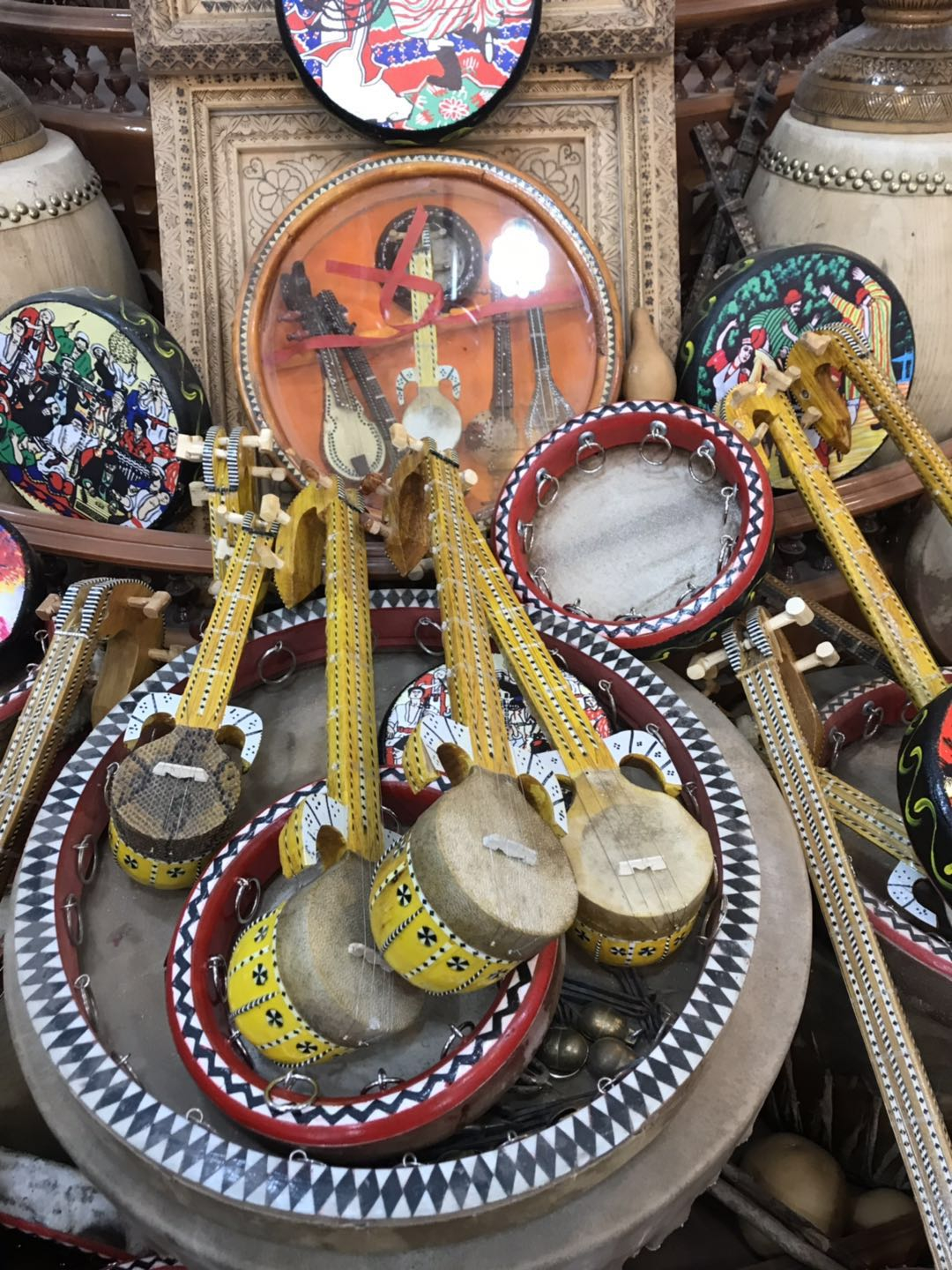
Musical instruments including rawap are displayed in Memetemin Ababakri’s shop in Kashgar Old City, Xinjiang Uygur Autonomous Region, June 15, 2019. /CGTN Photo
On the other side of town, Memetemin Ababakri is carefully crafting a traditional Uygur string instrument known as the rawap. The instrument, which dates back to the 14th century, is made from mulberry wood and has a bowl that is bound by animal skin, such as that from a snake or sheep.
The craft of making the rawap has been passed down generations. "I'm the fifth generation. My brothers and I have been making and playing them since we were kids; so did our father and grandfather before us," said Memetemin, who's now 50 years old. He adds that he has the largest family making musical instruments in Xinjiang.
The time needed to make a rawap can vary from several days to a couple of months. "Skill is crucial, but it also requires patience and passion," Memetemin told us. Apart from this Uygur musical instrument, he also manufactures instruments originating from other ethnic groups like Tajik, Kazaks and Uzbek.
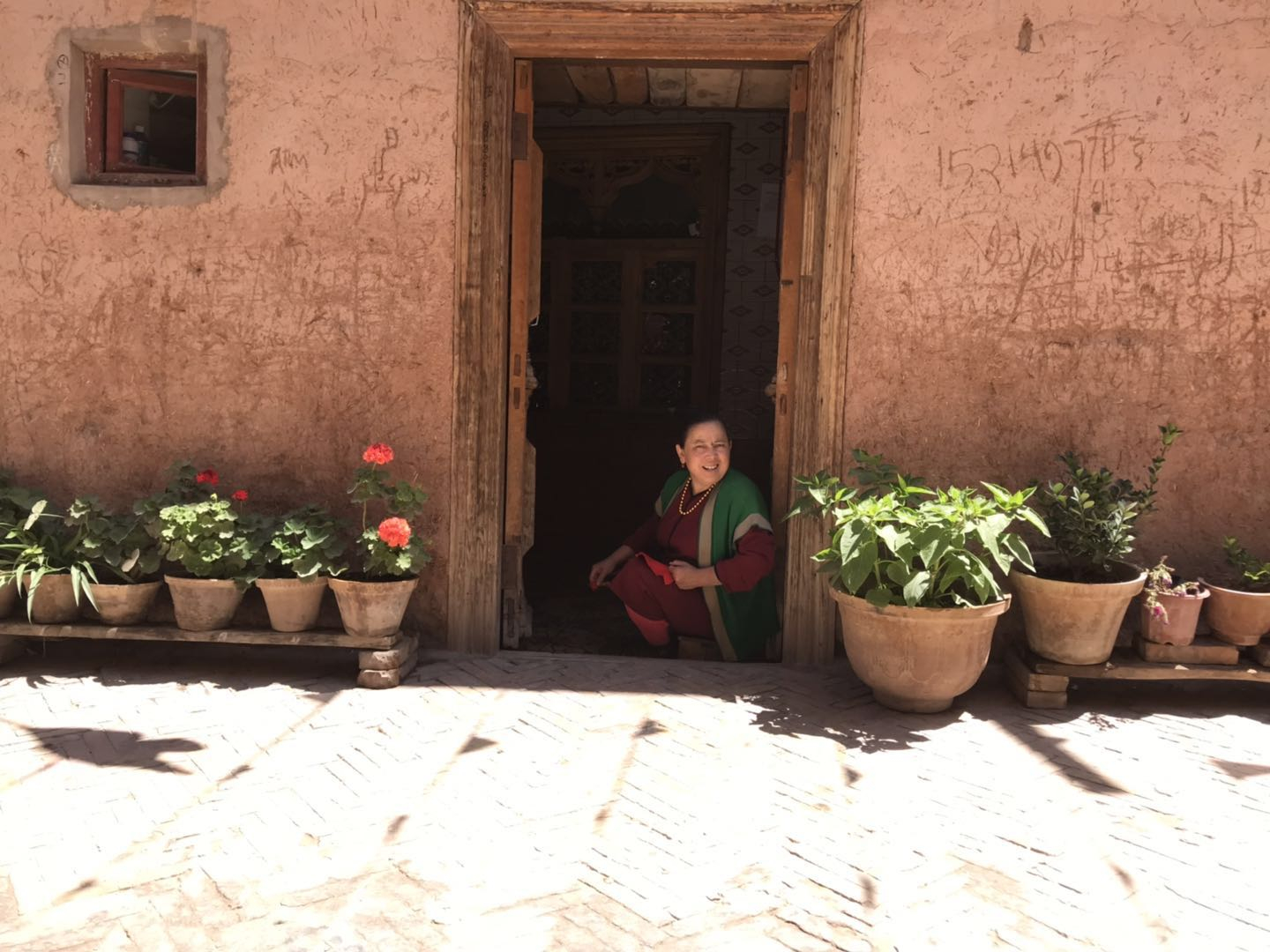
A woman is sewing in the doorway in Kashgar Old City's residential area, Xinjiang Uygur Autonomous Region, June 15, 2019. /CGTN Photo
Pressure from commerce has largely been alleviated by the local government, which provides subsidies to those engaged in culturally significant activities. "As our craft is considered an intangible cultural heritage, the government gives us a subsidy of around 7,000-8,000 yuan annually. Now, shops in the Kashgar Old City are tax-exempted. I own this shop, and I'm stress-free knowing I only have to pay for the electricity," Memetemin said.
He has several apprentices from outside of the region. "They came here learning to make and play the rawap, and then go back to their hometown to pass on these skills to the next generation."
For tourists, it's fun to spot an earthenware candelabrum or an exquisite rawap in the crisscrossing maze. But for craftsmen like Tursun and Memetemin, they are simply going about their lives.
Reporter: Wang Xiaonan
Videographers: Yang Shengjie, Zeng Ziyi
Video editors: Yang Shengjie, Zeng Ziyi
Voiceover: Zeng Ziyi
This is the sixth story in our series, "A rare look into southern Xinjiang." You can find the other articles documenting our seven-day tour throughout the region here: 1, 2, 3, 4, 5.

Copyright © 2018 CGTN. Beijing ICP prepared NO.16065310-3
Copyright © 2018 CGTN. Beijing ICP prepared NO.16065310-3